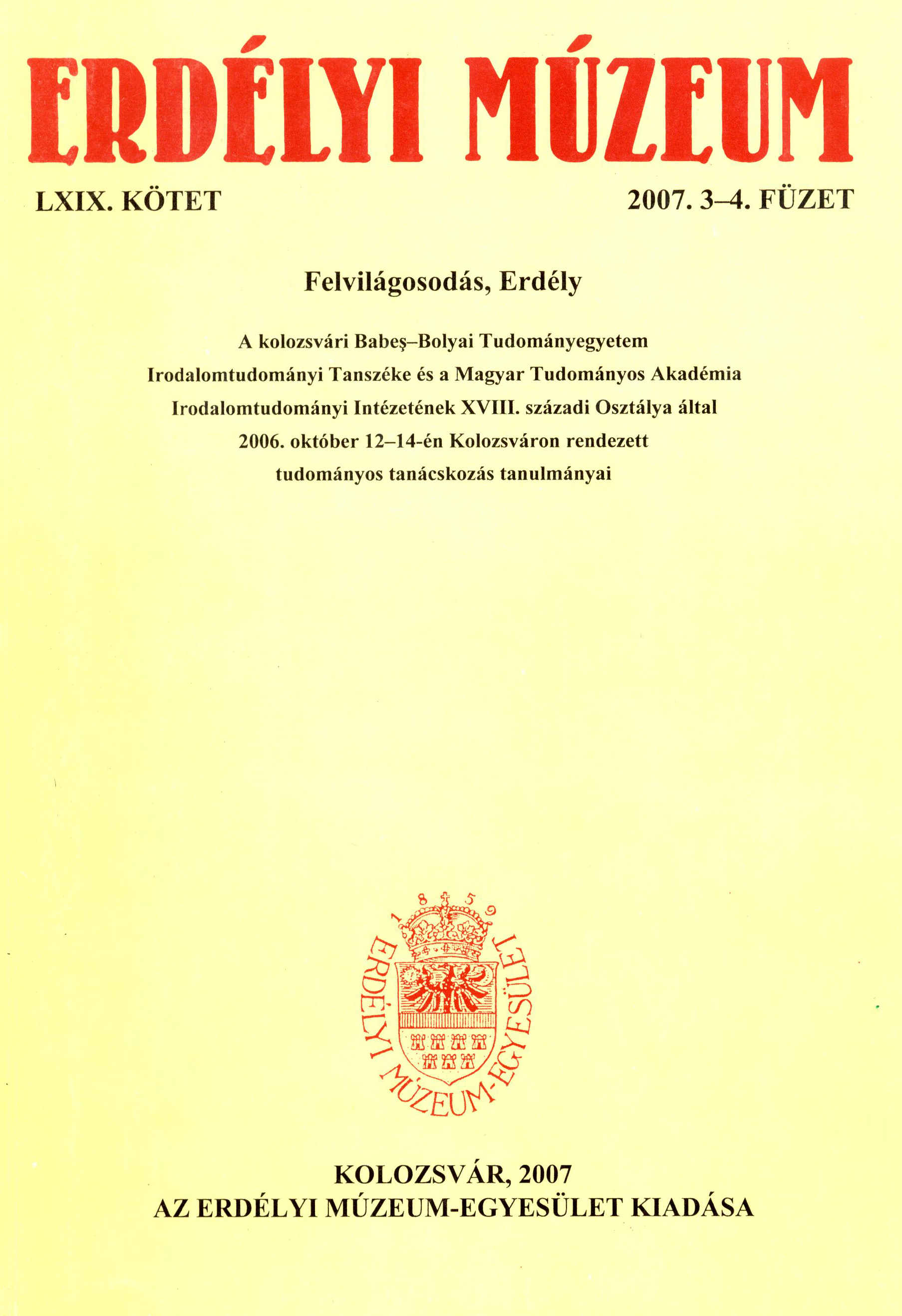Versjelhagyás, erdélyi utóreneszánsz
Poetry as Memento, Post-renaissance in Transylvania
(Barcsay, Sándorffy, Domokos Teleki)
Author(s): Emese EgyedSubject(s): Hungarian Literature
Published by: Erdélyi Múzeum-Egyesület
Keywords: Hungarian literature; Enlightment; wedding poetry; funeral poetry; name day greetings; translations; literary symbols; József Sándorffy; Ábrahám Barcsay; Domokos Teleki;
Summary/Abstract: The (new) Hungarian speaking literature was born at the „sentimentalist crossover of centuries”, among masses of versified name day greetings, sumptuous wedding and funeral poetry and translations. The three authors presented in this paper are all initiates in the use of literary symbols, they could very well be considered gate-keepers in Hungary and Transylvania, in the period of Enlightenment: József Sándorffy become familiar with poetry in pictures while studying in Vienna as a medical student, becoming later the main promoter of Hungarian theatre in Bihar. (But what would be then the so called phenomenon of „sándorffyzmus”?) After 35 years of wandering in Europe, the „poeta elegans”, Ábrahám Barcsay lives the life of a retired soldier in the southern lands of Transylvania, producing less and less poetry amidst non- Hungarian speaking people. And Domokos, a member of the extended Teleki family publishes his old and new poems, as well as versified greetings addressed to him as an autobiography in verses – as a present to himself. The compared analysis of poetic, symbol bearing systems also reveals important information on the poetry of the Enlightenment.
Journal: Erdélyi Múzeum
- Issue Year: LXIX/2007
- Issue No: 3-4
- Page Range: 167-179
- Page Count: 13
- Language: Hungarian

